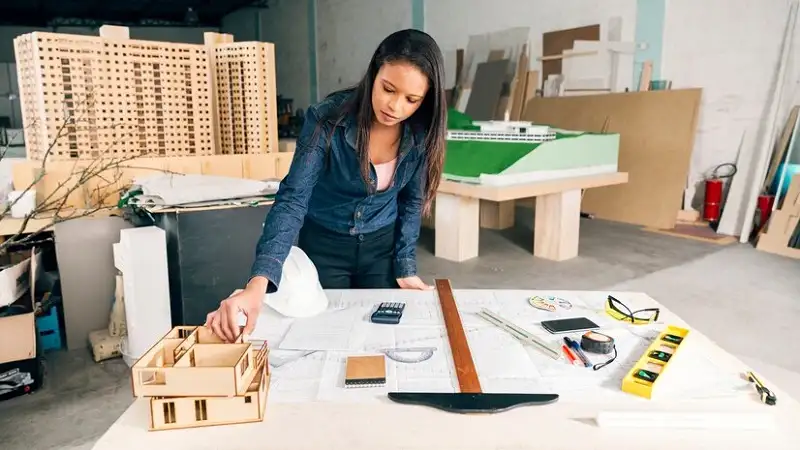Building a dream home is an exciting journey, but it comes with its own set of challenges. To ensure the process is smooth and enjoyable, here are some practical tips and tricks to guide you along the way.
1. Start with a Clear Vision
Before embarking on the building process, it’s essential to have a clear vision of what you want. This vision should encompass everything from the style and size of the house to the specific features you desire.
- Define Your Needs and Wants: List out your must-haves, like the number of bedrooms, bathrooms, or a home office. Separate these from your wants, such as luxury features like a pool or a home theater.
- Consider the Future: Think about how your needs may evolve over time. If you plan on expanding your family, or want to stay in the home for years to come, future-proofing the design is essential.
2. Set a Realistic Budget
Building a home can be expensive, and costs can quickly spiral out of control without a firm budget in place.
- Factor in All Costs: Consider everything from land acquisition and construction costs to permits, insurance, and unexpected expenses like delays or material price hikes.
- Plan for the Unexpected: Set aside a contingency fund (typically 10-15% of your budget) for unforeseen expenses. This will prevent you from going over budget or having to cut corners.
3. Choose the Right Location
The location of your home is one of the most important decisions you’ll make. It impacts not only your day-to-day living but also the long-term value of the property.
- Neighborhood Considerations: Research neighborhoods thoroughly. Consider proximity to schools, work, shopping, and recreational activities. Think about safety, future developments, and the overall vibe of the area.
- Land Quality: Ensure that the land is suitable for building. A surveyor can check for any issues like soil instability or drainage problems that could cause complications down the line.
4. Work with Experienced Professionals
Choosing the right team to bring your vision to life is critical for a successful project.
- Hire a Reputable Architect and Builder: An experienced architect can help translate your ideas into functional designs, while a skilled builder ensures that the work is done properly. Ask for referrals, check portfolios, and read reviews before making a decision.
- Effective Communication: Maintaining open lines of communication with your team is key. Regular check-ins will ensure that you stay informed and that any potential issues are addressed promptly.
5. Focus on Energy Efficiency
Incorporating energy-efficient elements into your home design can lead to long-term savings and environmental benefits.
- Insulation and Windows: Invest in high-quality insulation and energy-efficient windows to minimize heating and cooling costs.
- Solar Panels and Smart Home Systems: Solar energy and smart thermostats can reduce your home’s energy consumption, providing a sustainable and cost-effective solution.
6. Maximize Space with Smart Design
Smart design choices can make your home feel larger and more functional, even without increasing square footage.
- Open Floor Plans: An open floor plan can make common areas like the kitchen, living, and dining rooms feel more spacious and inviting.
- Storage Solutions: Use built-in storage, under-stair cabinets, or multi-functional furniture to make the most of every corner.
7. Pay Attention to Lighting
Lighting can make or break the atmosphere of your home, so it’s essential to get it right.
- Natural Light: Maximize the amount of natural light by strategically placing windows and skylights. This not only brightens up the space but also reduces the need for artificial lighting during the day.
- Layered Lighting: Use a combination of ambient, task, and accent lighting to create a warm, inviting atmosphere. Ensure that each room has the right lighting for its intended purpose.
8. Personalize with Finishing Touches
While structural elements are crucial, it’s the finishing touches that make your home feel truly yours.
- Custom Features: Incorporate unique features that reflect your personality and lifestyle. This could be a statement fireplace, custom cabinetry, or a beautifully landscaped garden.
- Interior Design: Choose colors, textures, and materials that suit your taste. Whether you prefer a minimalist look or a more eclectic style, personalization will make your home feel like an extension of yourself.
9. Think Long-Term Maintenance
Your dream home should be built to last, and that means considering long-term maintenance from the outset.
- Durable Materials: Invest in high-quality, durable materials for things like roofing, flooring, and countertops to minimize future repairs.
- Low-Maintenance Landscaping: Opt for plants that require minimal upkeep, and consider installing an irrigation system to keep your garden looking great with less effort.
10. Be Patient and Stay Flexible
Building a home is a lengthy process, and it’s essential to stay patient and flexible as things progress.
- Expect Delays: Weather conditions, supply chain issues, or other unforeseen circumstances may delay construction. Being mentally prepared for these setbacks will help you manage stress.
- Stay Open to Changes: Sometimes, adjustments need to be made mid-project. Keeping an open mind will allow you to adapt and still achieve your overall vision.
Conclusion
Building your dream home is an exciting and rewarding journey. By following these practical tips and tricks, you can avoid common pitfalls, stay within budget, and create a home that suits your needs and lifestyle for years to come. With careful planning, the right professionals, and a clear vision, your dream home is within reach.
